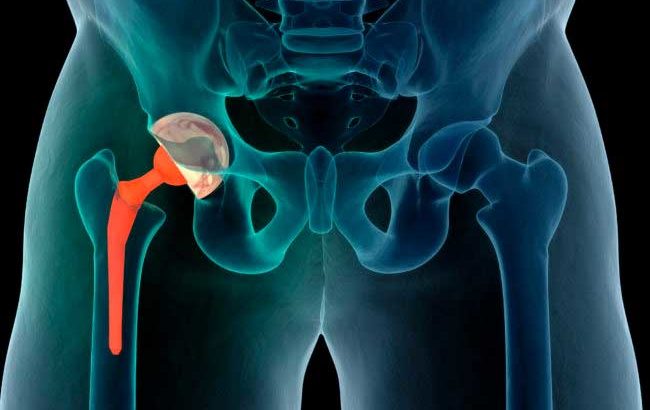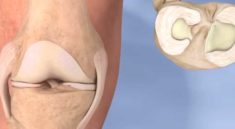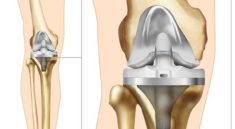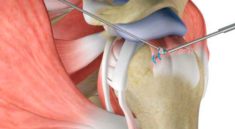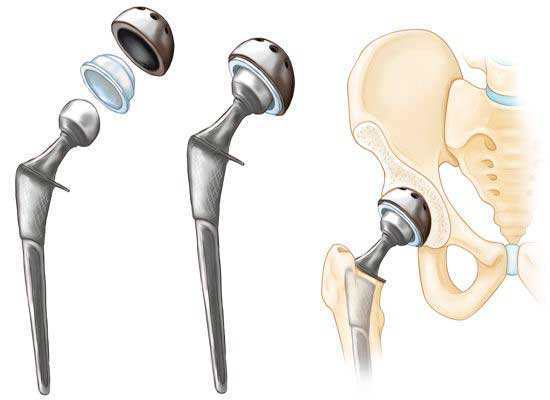
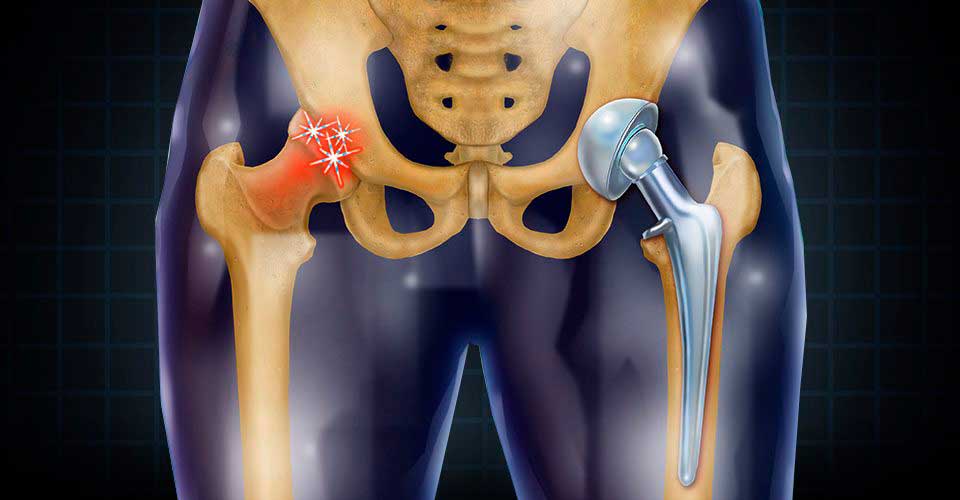
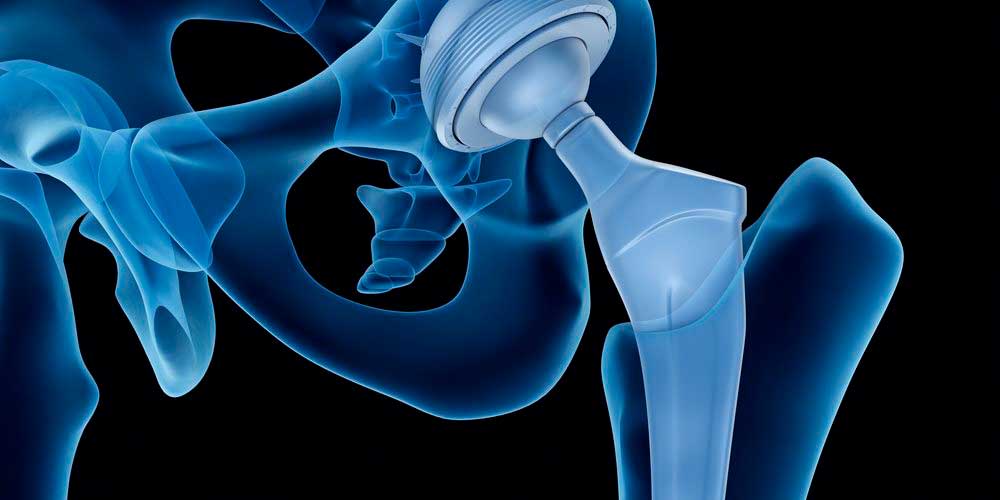
INFORMATION
HIP REPLACEMENT SURGERY
Hip replacement surgery is a procedure in which a doctor surgically removes a painful hip joint with arthritis and replaces it with an artificial joint often made from metal and plastic components. It usually is done when all other treatment options have failed to provide adequate pain relief. The procedure should relieve a painful hip joint, making walking easier.
Why it’s done
Conditions that can damage the hip joint, sometimes necessitating hip replacement surgery, include:
- Commonly known as wear-and-tear arthritis, osteoarthritis damages the slick cartilage that covers the ends of bones and helps joints move smoothly.
- Rheumatoid arthritis.Caused by an overactive immune system, rheumatoid arthritis produces a type of inflammation that can erode cartilage and occasionally underlying bone, resulting in damaged and deformed joints.
- If there is inadequate blood supply to the ball portion of the hip joint, the bone may collapse and deform.
You might consider hip replacement if you’re experiencing hip pain that:
- Persists, despite pain medication
- Worsens with walking, even with a cane or walker
- Interferes with your sleep
- Affects your ability to go up or down stairs
- Makes it difficult to rise from a seated position
What Happens During Hip Replacement Surgery?
Hip replacement surgery can be performed traditionally or by using what is considered a minimally-invasive technique. The main difference between the two procedures is the size of the incision.
During standard hip replacement surgery, you are given general anesthesia to relax your muscles and put you into a temporary deep sleep. This will prevent you from feeling any pain during the surgery or have any awareness of the procedure. A spinal anesthetic may be given to help prevent pain as an alternative.
What Happens After Hip Replacement Surgery?
You will likely stay in the hospital for four to six days and may have to stay in bed with a wedge-shaped cushion between your legs to keep the new hip joint in place. A drainage tube will likely be placed in your bladder to help you go to the bathroom. Physical Therapy usually begins the day after surgery and within days you can walk with a walker, crutches, or a cane. You will continue Physical Therapy for weeks to months following the surgery.
After the procedure
After surgery, you’ll be moved to a recovery area for a few hours while your anesthesia wears off. Medical staff will monitor your blood pressure, pulse, alertness, pain or comfort level, and your need for medications.
Blood clot prevention
After your surgery, you’ll be at increased risk of blood clots in your legs. Possible measures to prevent this complication include:
- Early mobilization.You’ll be encouraged to sit up and even try walking with crutches or a walker soon after surgery. This will likely happen the same day as your surgery or on the following day.
- Pressure application.Both during and after surgery, you may wear elastic compression stockings or inflatable air sleeves similar to a blood pressure cuff on your lower legs. The pressure exerted by the inflated sleeves helps keep blood from pooling in the leg veins, reducing the chance that clots will form.
- Blood-thinning medication.Your surgeon may prescribe an injected or oral blood thinner after surgery. Depending on how soon you walk, how active you are and your overall risk of blood clots, you may need blood thinners for several more weeks after surgery.
Risks associated
with hip replacemen surgerymay include:
- Blood clots. Clots can form in your leg veins after surgery. …
- Infections can occur at the site ofyour incision and in the deeper tissue near your new hip …
- …
- …
- Change inleg length. …
Physical therapy
A physical therapist may help you with some exercises that you can do in the hospital and at home to speed recovery.
Activity and exercise must be a regular part of your day to regain the use of your joint and muscles. Your physical therapist will recommend strengthening and mobility exercises and will help you learn how to use a walking aid, such as a walker, a cane or crutches. As therapy progresses, you’ll usually increase the weight you put on your leg until you’re able to walk without assistance.
Home recovery and follow-up care
Before you leave the hospital, you and your caregivers will get tips on caring for your new hip. For a smooth transition:
- Arrange to have a friend or relative prepare some meals for you
- Place everyday items at waist level, so you can avoid having to bend down or reach up
- Consider making some modifications to your home, such as getting a raised toilet seat if you have an usually low toilet
Six to 12 weeks after surgery, you’ll have a follow-up appointment with your surgeon to make sure your hip is healing properly. If recovery is progressing well, most people resume their normal activities by this time — even if in a limited fashion. Further recovery with improving strength will often occur for six to 12 months.
What Activities Should I Avoid After Hip Replacement Surgery?
For anywhere from six to 12 months after hip replacement surgery, pivoting or twisting on the involved leg should be avoided. You should also not cross the involved leg past the midline of the body nor turn the involved leg inward and you should not bend at the hip past 90 degrees. This includes both bending forward at the waist and squatting.
Your physical therapist will provide you with techniques and adaptive equipment that will help you follow any of the above guidelines and precautions while performing daily activities. Remember, by not following your therapist’s recommendations you could dislocate your newly replaced hip joint and may require another surgery.
Even after your hip joint has healed, certain sports or heavy activity should be avoided. The replacement joint is designed for usual day-to-day activity.
What Can I Do at Home After Hip Replacement Surgery?
There are a few simple measures that you can take to make life easier when you return home after hip replacement surgery, including:
- Keep stair climbing to a minimum. Make the necessary arrangements so that you will only have to go up and down the steps once or twice a day.
- Sit in a firm, straight-back chair. Recliners should not be used.
- To help avoid falls, remove all throw rugs and keep floors and rooms clutter free.
- Use an elevated toilet seat. This will help keep you from bending too far at the hips.
- Keep enthusiastic pets away until you have healed completely.
Results
Expect your new hip joint to reduce the pain you felt before your surgery and increase the range of motion in your joint. But don’t expect to do everything you could do before the hip became painful. High-impact activities — such as running or playing basketball — may be too stressful on your artificial joint. But in time, you may be able to swim, play golf, hike or ride a bike comfortably.
What is the recovery time for a hip replacement?
3 to 6 weeks
Most hip replacement patients are able to walk within the same day or next day of surgery; most can resume normal routine activities within the first 3 to 6 weeks of their total hip replacement recovery. Once light activity becomes possible, it’s important to incorporate healthy exercise into your recovery program
Is a hip replacement painful?
For most people who undergo the surgery, hip replacement successfully relieves hip pain and restores hip function. When, as in your situation, people have painafter the surgery, there’s often an underlying problem that can be diagnosed and effectively resolved if it’s treated promptly
How should you sit after a hip replacement?
While Sitting
- Sit on a firm chair with straight back and armrests. Keep hips and knees at 90 degrees (i.e., knees below hips).
- DO NOT sit on low, soft or overstuffed furniture that may cause excessive bending of your hip.
- Follow the precautions and weight-bearing status as instructed by your doctor or therapist.

